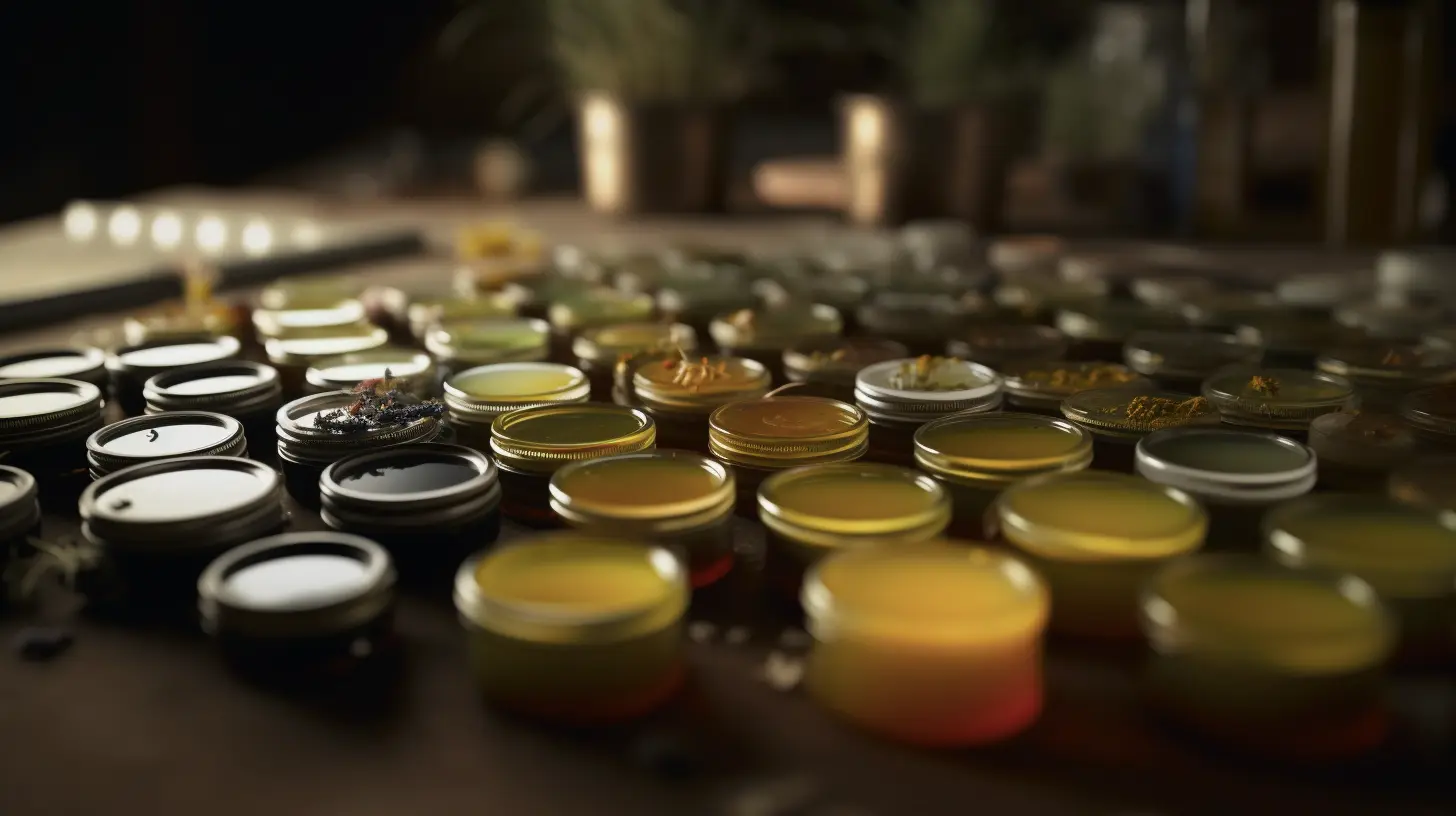-
Natural Soaps
- Rosemary Goat Milk Soap New
- Peppermint Tea Tree Goat Milk Soap
- Peppermint Spearmint Goat Milk Soap
- Patchouli Lavender Goat Milk Soap Hot
- Oatmeal Lavender Goat Milk Soap
- Oatmeal Honey Goat Milk Soap
- Oatmeal Almond Goat Milk Soap
- Lavender Rosemary Goat Milk Soap
- Lavender Goat Milk Soap
- Citrus Sage Goat Milk Soap
- Chamomile Lemon Goat Milk Soap
- Calendula Orange Goat Milk Soap
- Anise Goat Milk Soap
- 3 Wrapped Soap Bars for $15.00
- 3 Un-Wrapped Soap Bars for $14.00
A Comprehensive Guide to Crafting Natural Healing Balms

Introduction:
Discover the art of creating herbal salves at home, harnessing the power of medicinal plants to craft soothing and healing balms. Homemade herbal salves are a wonderful way to promote skin health, relieve minor ailments, and indulge in the benefits of nature’s remedies. In this comprehensive guide, we’ll explore the process of making herbal salves, from selecting the right herbs to infusing oils and creating healing blends. Elevate your wellness routine with these natural creations and unlock the healing potential of botanical ingredients.
Section 1: Selecting Herbal Ingredients
Choose herbs known for their therapeutic properties, such as lavender, calendula, chamomile, comfrey, or plantain. Each herb brings unique benefits, from soothing inflammation to promoting wound healing. Opt for high-quality organic herbs for the best results. Research their specific properties and choose herbs that align with your intended use.
Section 2: Infusing Oils with Herbs
Infusing oil is a vital step in creating herbal salves. Choose carrier oils like olive oil, coconut oil, or almond oil that have skin-nourishing properties. Gently heat the oils with the chosen herbs, allowing them to infuse over a low heat or using a slow cooker or double boiler method. Strain the herbs from the oil, and you’re left with an herbal-infused oil ready for salve creation.
Section 3: Creating the Salve Base
To create a salve base, combine the herbal-infused oil with beeswax or other plant-based waxes like candelilla or soy wax. The beeswax acts as a natural emulsifier and thickener. Heat the oil and wax together until the wax melts, and then allow the mixture to cool and solidify. Adjust the ratio of oil to wax depending on the desired consistency of your salve.
Section 4: Customizing with Essential Oils (Optional)
For added therapeutic benefits and pleasing scents, consider incorporating essential oils into your salve. Choose essential oils that complement the herbal ingredients and possess desired properties. Lavender, tea tree, eucalyptus, or peppermint essential oils are popular choices. Remember to use essential oils sparingly and follow recommended dilution guidelines.
Section 5: Proper Storage and Usage
Store your homemade herbal salves in dark-colored glass jars with airtight lids to protect them from light and air exposure, which can degrade their quality. Label each jar with the name, ingredients, and date of creation. Store them in a cool, dry place to prolong their shelf life. Ensure the salve is used externally and follow proper hygiene practices when applying it to the skin.
Conclusion:
Crafting homemade herbal salves is a rewarding and empowering process that allows you to harness the healing potential of nature. By selecting the right herbs, infusing oils, and creating a nourishing salve base, you can create customized balms tailored to your wellness needs. Embrace the beauty of botanical ingredients and unlock the therapeutic benefits of herbal salves in your daily self-care routine. Whether you seek skin nourishment, soothing relief, or simply a connection with nature, homemade herbal salves are a delightful addition to your wellness journey.


